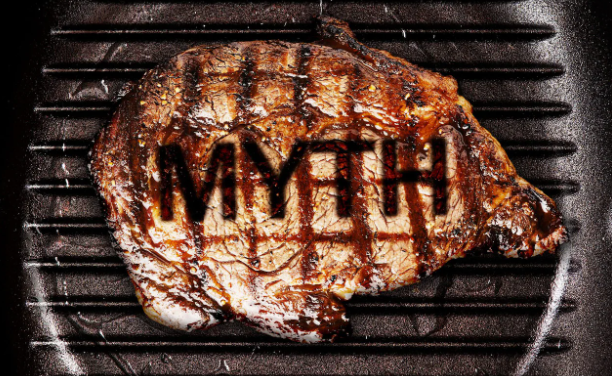| The nutritional benefits of steak are often overshadowed by concerns regarding its fat content and association with heart diseases. However, when consumed in moderation and chosen wisely, steak can be a valuable addition to a balanced diet. Steak is an excellent source of high-quality protein, essential for muscle repair and growth. It provides all nine essential amino acids necessary for the human body’s functions, making it a complete protein source. |
| Moreover, steak is rich in various vitamins and minerals critical for health. It contains significant amounts of Vitamin B12, crucial for red blood cell formation and proper brain function. Iron is another vital nutrient found abundantly in steak; it plays a key role in transporting oxygen throughout the body. Steak also provides zinc, which supports immune system health, and selenium, an important antioxidant that helps protect cells from damage. |
| It’s important to note that choosing lean cuts of steak and preparing them with healthy methods can maximize these nutritional benefits while minimizing potential risks. Incorporating steak into a diet that emphasizes fruits, vegetables, whole grains, and other lean proteins can ensure a well-rounded approach to nutrition. |
| Understanding The Different Types Of Fats In Steak |
| Understanding the different types of fats in steak is crucial to debunking myths about its impact on health. Steak contains a mix of fats, including saturated, monounsaturated, and polyunsaturated fats. Saturated fat, often vilified for its association with heart disease, does make up a portion of the fat content in steak. However, it’s important to note that not all saturated fats have the same health effects and recent research suggests that moderate intake may not be as harmful as once thought. |
| Monounsaturated fats, which are abundant in olive oil and avocados as well, constitute a significant part of steak’s fat profile. These fats are widely recognized for their heart-healthy properties, including their ability to improve cholesterol levels. Additionally, steak provides essential omega-3 fatty acids in the form of polyunsaturated fats. Although not as rich in omega-3s as fatty fish like salmon, these nutrients contribute to overall cardiovascular health and anti-inflammatory benefits. |
| Henceforth, when considering steak’s role in a balanced diet, it’s imperative to look beyond the simplistic labeling of “bad” due to its fat content and appreciate the complexity and nutritional value offered by its diverse fatty acid profile. |
| Debunking The Link Between Red Meat And Heart Disease |
| In the discussion on red meat and its impact on health, the link between steak consumption and heart disease has been a contentious topic. This connection largely stems from early studies that associated high saturated fat intake with increased cholesterol levels, a known risk factor for heart disease. However, recent research suggests a more nuanced understanding is necessary. |
| For instance, not all studies have found a direct correlation between red meat consumption and heart disease. Some of this discrepancy can be attributed to the quality of meat consumed and dietary patterns as a whole. Grass-fed beef, for example, contains more omega-3 fatty acids and antioxidants compared to its grain-fed counterpart, potentially mitigating some health risks. |
| Moreover, dietary patterns that include moderate amounts of lean red meat alongside plenty of fruits, vegetables, whole grains, and healthy fats have not been shown to increase heart disease risk in the same way that diets high in processed meats do. Thus, while excessive consumption of any single food item is generally inadvisable for health reasons, the evidence suggests that enjoying steak in moderation within a balanced diet does not inherently spell trouble for heart health. |
| How To Choose And Prepare A Healthier Steak Option |
| Choosing and preparing a healthier steak option begins with selecting the right cut. Opt for leaner cuts such as sirloin, tenderloin, or filet mignon. These cuts contain less marbling and fat, making them a healthier choice without sacrificing flavor. When shopping, look for grass-fed beef if possible. Grass-fed beef is often higher in certain nutrients, including omega-3 fatty acids and antioxidants, compared to grain-fed counterparts. |
| When it comes to preparation, moderation is key. Marinating your steak can not only enhance flavor but also reduce the formation of harmful compounds during cooking. Ingredients like vinegar, lemon juice, or herbs not only infuse the meat with flavors but can also help tenderize it naturally without adding excessive calories or fat. Grilling or broiling your steak rather than frying helps minimize added fats. |
| If you do use oil, opt for a small amount of high-smoke point oils like canola or avocado oil. Avoid charring your meat excessively to reduce exposure to carcinogenic compounds that can form at very high temperatures. Finally, consider portion size to keep your meal balanced; a healthy serving size of steak is about 3-4 ounces (85-113 grams), roughly the size of a deck of cards. |
| Exploring The Protein And Vitamin Content In Steak |
| Exploring the nutritional landscape of steak reveals a rich tapestry of protein and vitamins essential for maintaining a healthy body. Central to the debate on steak’s impact on health is its substantial protein content. Protein, a macronutrient pivotal for muscle repair, growth, and overall bodily function, is abundant in steak. This high-quality protein comes complete with all nine essential amino acids necessary for our dietary needs, making it an excellent source for building and repairing tissues. |
| Moreover, steak is not just about protein; it’s a treasure trove of vitamins crucial for wellness. It boasts significant amounts of B vitamins, particularly B12—a nutrient critical for nerve function and blood formation that cannot be found in plant-based foods. Steak also provides other B vitamins like niacin, which plays a key role in converting food into energy, and riboflavin that supports skin health and vision. |
| Vitamin D is another nutrient found in steak that deserves mention. Essential for bone health by aiding calcium absorption, vitamin D is typically sourced from sunlight exposure but can be supplemented through diet in regions with limited sunlight. |
| In sum, while concerns about red meat consumption exist, understanding the nutritional benefits provided by steak—especially its high-quality protein and range of vitamins—is crucial in debunking myths around its impact on health. |
| |
| |
| |
| |






